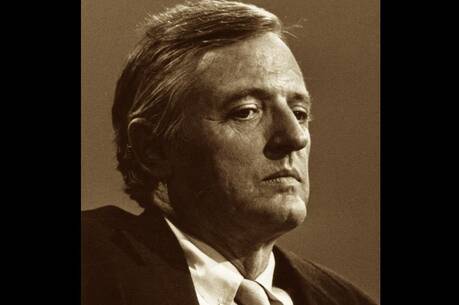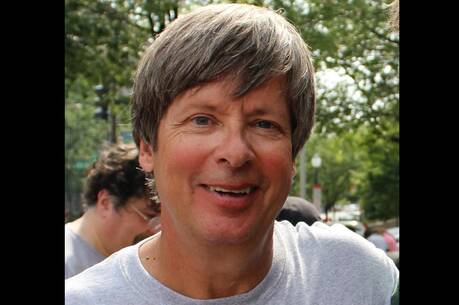A Call for Reform
It may be difficult to believe a profession that commands the salary and social status of U.S. physicians is in crisis, but there is widespread and growing discontent within this guild. While serious reform is afoot for the health care system writ large, the clinicians at its center (or at its top) are receiving scant attention.
In The Finest Traditions of My Calling, Abraham Nussbaum offers a plea to see that true reform of the health care system will be possible only if we also seek a renewal of the physician’s practice. With compelling narratives from his own experience as a psychiatrist, Nussbaum’s entreaty is easy to believe.
The author’s central argument rests on the premise that none of the innovations currently being discussed can truly transform medicine. We tinker at the edges with value-based payment reform, electronic health records and population health. We obsess over quality improvement measures and evidence-based practice. We invest in programs designed to bring the humanities back into education, to wed the art with the science of medical practice.
The author suggests, “The advances in knowledge in twentieth-century medicine began…when physicians began to see like scientists. And I suspect that medicine will advance once more only when physicians change their self-perception again.” The sine qua non for us to realize medicine’s future is this new vision—or, perhaps more correctly, it is an old vision, renewed.
Throughout the work, Nussbaum is refreshingly self-aware of both his own limitations and those of his profession. For example, he criticizes the white coat ceremony that is now standard at U.S. medical schools, acknowledging that the ceremony was initially intended to connect incoming students to their patients and foster the virtues of compassion and humility. It did not take long, however, for the ceremony to be co-opted by, rather than challenging, the profession’s prevailing narrative of professional distinction. Nussbaum offers the same rigorous honesty when he reflects on his own moments of confusion and failure with patients over the years.
Hidden in the text is the author’s unspoken question as to whether the call to practice medicine is a profession or a vocation. Truthfully, it seems that the author wants the benefits of both and the costs of neither. He hopes to renew a sense of vocation and service, yet never speaks of the sacrifice of autonomy that must accompany it. I suspect the work of a physician is both a profession and a vocation, but the latter cannot be reclaimed without critiquing how the former’s privileges may drown out one’s call.
To accompany his own narrative, Nussbaum calls upon luminaries of medicine’s past. His appreciation for the profession’s history is laudable. Hildegard of Bingen and William Osler, Paul Farmer and many others do not just provide stories to lean upon but also offer the kind of physician self-perception Nussbaum is hoping to foster among his peers.
Despite the book’s subtitle, there is little new information a reader with a serious interest in medicine’s renewal will find in this text. The author’s claim that renewal will not come in any of the system-level innovations currently being adopted is in all likelihood correct. Even more, the thesis that true renewal will come by changing disposition is also quite possibly correct. But what would a resident’s on-call schedule in Nussbaum’s humanistic medicine look like? How can we allow for deeper relationships with patients without extending workdays for physicians or slashing their compensation? There is too often a lack of “construction” in this attempt at constructive criticism.
To those familiar with the history of U.S. health care, it is hard to ignore the fact that the physician crisis we now face is largely one of the profession’s own making. Nussbaum acknowledges this, but does so in a way that would have the readers believe physicians were passive recipients of changing culture that now bears down upon them. He briefly mentions the American Medical Association’s role in defeating national health insurance in 1948, but offers little else on the role physicians played in shaping our modern health care system. Physicians are the ones who demanded fragmented payment for physician care and hospital services. Medical doctors have strategically prevented nonphysician clinicians from expanding their scope of work. The A.M.A. opposed reform not only in 1948, but in nearly every initiative from Franklin D. Roosevelt to Bill Clinton. Nussbaum certainly knows this history, but many of his colleagues may not. While the book rightly calls upon the finest traditions of medicine’s past, a vision for the future must also reckon with its less admirable history.
It is easy to delight in this text. Nussbaum’s narrative approach is full of heart. His critiques of the health care system and the formation of physicians are thoughtful, balanced and often deeply moving. It is not hard to imagine that this text will stand alongside the works of Atul Gawande and Abraham Verghese for its ability to draw fellow physicians and lay readers into the unresolved problems of modern health care. Unfortunately, the title and the first two chapters set the reader up for something that is ultimately not delivered.
The profession of physicians faces a crisis in the United States. Will something interrupt the march toward greater efficiency and standardized care? Few have connected the two crises, but the vocation of physicians has faced a crisis of its own. The insight Nussbaum provides is that the profession of medicine can best be saved if it reclaims its vocation.
As the Affordable Care Act continues to change the landscape of U.S. health care, we will not be in short supply of innovations. However, The Finest Traditions of My Calling offers one of the few that has the potential to actually work.
This article also appeared in print, under the headline “A Call for Reform,” in the May 23-30, 2016, issue.








